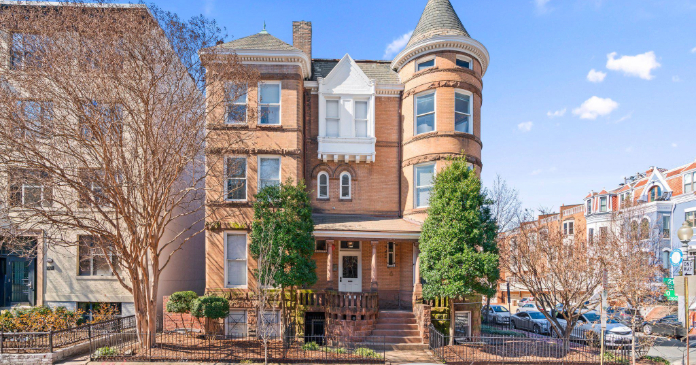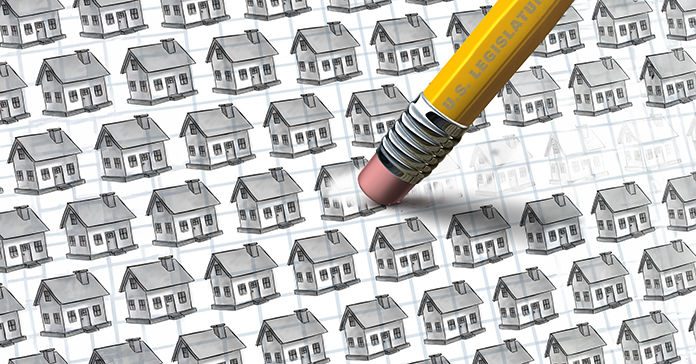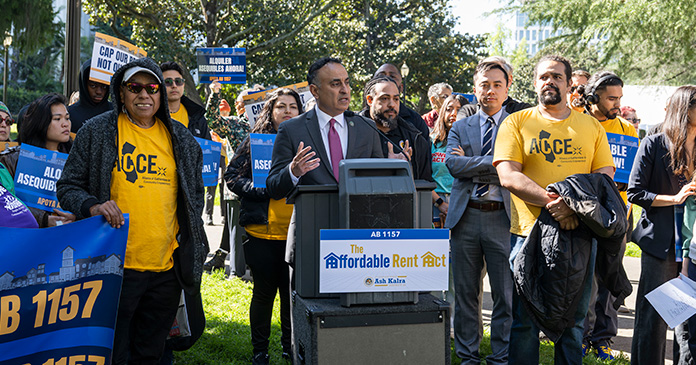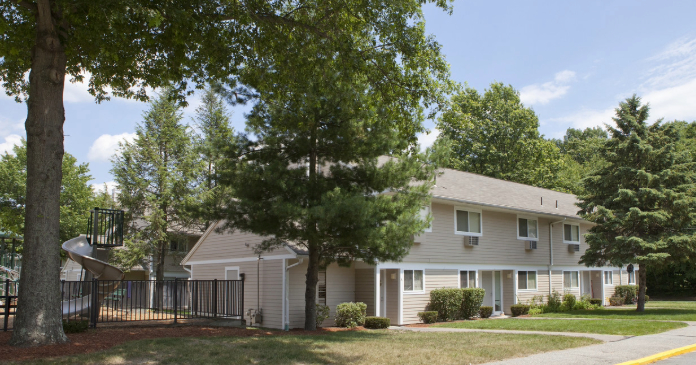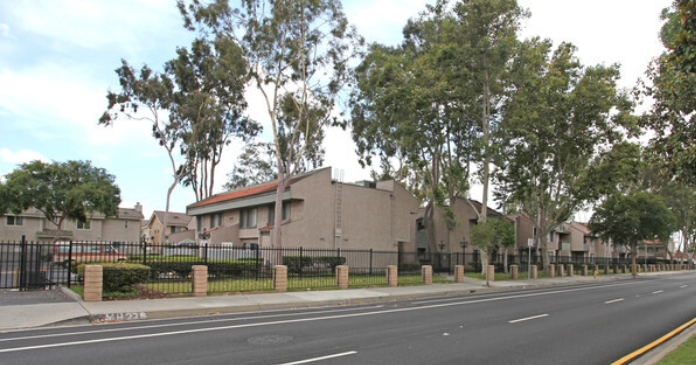Some began converting their own properties and a few even built new for-sale product. The profits rolled in. While the condo craze may be over for now, most of these companies have no plans to exit that business anytime soon.
Wall Street hasn’t looked favorably on apartment REITs’ for-sale business, no matter how profitable. Some analysts thought the added layer of risk from engaging in such a cyclical, interest-rate sensitive business as condos added volatility to earning streams and warranted valuing those companies more like home builders–at multiples of eight or nine times earnings rather than the 15 or 16 times earnings typically used to determine the worth of apartment REITs.
But companies like Equity Residential, Post Properties, Colonial Property Trust and UDR, Inc., always said they were well-positioned to weather any sea change in the condo market because they had operating platforms from which to rent out unsold units.
As the housing market continues to soften, those REITs are slowing their condo businesses and at least one is flipping unsold units to rental. Results from condo activity varies depending on market, product type and target buyer.
The for-sale game has been good to Equity Residential (EQR), generating total net profits of $153.1 million from 2004 through 2006. But, after weaker than expected sales in Q4, EQR announced it was cutting back on the condo business it started in 2002 and halting conversion activities at five properties. “We’re making good returns on this condo business, and, even during this downturn in for-sale housing, there is now–and we expect there to be for quite some time– demand for low-priced starter housing in our markets and we expect to be in the business for the long haul,” said EQR CEO David Neithercut in the REIT’s Q1 earnings call.
EQR saw an unexpected lift in FFO in Q1 from condo sales. “We expected very little contribution from condos, but received a $0.01 benefit to FFO related to 157 units sold. We still expect to sell approximately 700 units this year for FFO contribution of $0.03 to $0.04,” said EQR Chief Financial Officer Donna Brandin.
EQR recently added a property to its condo conversion inventory in Seattle, where the company continues to see strong demand for entry- level condos. But the REIT’s conversion party appears to be over in Phoenix. Although EQR saw modest improvement in condo sales in Phoenix in Q4 and completed and sold out six conversions in that market, the company cancelled all sales contracts at the 248-unit Bella Vista and aborted plans to begin sales at two more projects in the area–the 272-unit Alameda Ranch in Scottsdale and the 160-unit Azure Creek, just north of Phoenix in Cave Creek. Neithercut said those communities will continue to operate as rentals going forward.
EQR also stopped the sales process at two assets in Virginia–the 176- unit Oaks at Falls Church and the 252-unit Reserve at Regency Park in Centreville–and will return those properties to rental. Neithercut said one of those deals “would have created $2 million in Q4 earnings for the company, but we just didn’t think it was appropriate to go forward because we wanted to avoid having a fractured condo deal down the road. This has always been our back-up plan. It’s not a bad outcome and we always knew we could fall back on it if there was a change in the condo market.”
EQR will continue selling its one remaining converted asset in Phoenix, the 224-unit Milano Terrace in Scottsdale. Pre-sales at the property that was built as condos 22 years ago began in November 2005 and last month 20 percent of the units still remained unsold. Prices range from $279,900 for a one-bedroom unit to $378,400 for two- bedroom, two-and-a-half-bath town homes, depending on a unit’s location within the community. The property offers golf course and lake views and every unit boasts a garage and a fireplace.
Although construction costs aren’t trending at the same pace they were during the condo craze, EQR isn’t seeing much of a reduction in land costs in the markets where the REIT wants to build. But the company isn’t passing up opportunities to buy busted condos in its core markets. EQR recently bought the 256-unit Prime at Arlington Courthouse in the D.C. metro from Monument Realty, a condo converter that purchased the apartment component of the 11-story, mixed-use tower from locally-based Paradigm Realty in 2005. None of the units were sold when EQR bought the asset last September.
Contributions from Post Properties’ condo business were flat in Q1. The REIT entered the for-sale arena in December 2004, rather late in the condo game, when Post partnered with Washington, D.C.-based developer PN Hoffman to build the 145-unit Condominiums at Carlyle Square –part a mixed-use development that includes 205 rental apartments and some retail. The Condominiums at Carlyle Square and the 85-unit Mercer Square in Dallas are still under construction. Another four new- construction condo projects valued at $250 million are in the company’s pipeline that could start in the next nine to 18 months, but Post cautiously plans to pre-sell units before pushing any dirt.
Those include the 137-unit 3630 Peachtree in Atlanta’s Buckhead area; the 70-unit Park in greater Washington, D.C.; the 166-unit Four Seasons Residences in Austin, which is currently benefiting from that market’s strong job growth and the property’s access to the amenities and services of the adjacent Four Seasons Hotel, and the 192-unit Soho Square in Tampa, where the company is seeing some near-term softness.
Post launched Post Preferred Homes in early 2005 and converted three assets in the Tampa, Dallas and Atlanta markets that same year, went on to close sales at two conversion projects in the first quarter of 2007 and continues to sell units at the 143-unit RISE lofts in Houston.
Post is offering broker concessions and paying buyers’ mortgage points to help move the one- and two-bedroom town homes at the 206- unit Harbour Place City Homes, a waterfront condo community on Harbour Island in Downtown Tampa, where condos are priced from around $200,000 for a one-bedroom to $339,000. The three-bedroom units have sold out. Post President and CEO David Stockert said, “The cost of that program is within the range of what we allowed on the incentives of the project, which is in the five to six percent range of the sales price, and it’s having a very positive effect on sales, even though the Tampa market clearly has slowed down and we have adjusted our future projections.”
UDR, Inc., has yet to offer buyer concessions in Tampa or Phoenix and, in the desert market, is selling condos as-is to between five and 10 percent of the current apartment residents who are willing to pay an additional $150 per month to own, take the tax write-off and upgrade the units themselves later on.
The REIT will continue to take a measured approach to its three-year- old condo business with plans to expand conversion operations in California, where Post is enticing entry-level buyers with price points of $400,000 to $500,000 in markets where condos are selling at an average of $700,000 and $800,000.
UDR still thinks its condo business, which began at the end of 2004 with conversion of the 36-unit Harding Park Townhomes in Salinas, Calif., adds value to the company’s overall enterprise. But, because it no longer is the ramp-up panacea to the problems that plagued the apartment industry three years ago, the REIT has incorporated a substantial reduction in condo income into the company’s 2007 FFO guidance from the previous year, UDR CFO/Executive VP Mike Ernst said in January 2007.
The REIT expects first closings at the 320-unit second phase of the Gallery at Bayport in Tampa later this year. Units in the first 176- unit phase flew off the shelf last year at prices averaging $156,400 and UDR is seeing some of them come back into the market at prices around $10,000 higher.
“When you look at both Phoenix and Tampa, the entry level price from renting to owning is almost sterile, so it’s a matter of taking our pace and holding our price,” said CEO Tom Toomey. Tampa also is the market where UDR chose to start its first-ever ground-up condo project last November– 54 town homes that will sell for around $400,000 and are the newest addition to Island Walk, a 900-unit community that also includes condo conversions and recently remodeled apartments.
Alabama-based Colonial Properties Trust entered the for-sale sector in Q2 2005 with the conversion of the 85-unit Renwick in Charlotte, N.C. But, after converting a total of 1,450 units, the diversified REIT announced in Q3 2006 that it has no future conversion plans. Colonial will continue to build ground-up for-sale product in the Sunbelt as part of the REIT’s new emphasis on mixed-use development.
West Coast-focused Essex Property Trust has dabbled in the conversion game, selling the 20-story, 270-unit Essex on Lake Merritt in Oakland, Calif., to a converter in 2004 for $88 million and the 188- unit Eastridge in San Ramon to a converter in 2005 for $47.5million, $28.3 million more than the REIT paid for the garden-style community in 2003. Essex was able to financially participate in profits from the sale of condos at those two communities through participating loans originated by the REIT’s affiliate, explained Essex President and CEO Keith Guericke.
During the second half of 2006, Essex went through the process to convert the 68-unit Peregrine Point located in Seattle, Wash. The company sold 45 of those condo units, generating $0.03 of FFO in 2006, and expects to generate from $0.01 to $0.02 of FFO from the sale of the remaining units this year.
Essex doesn’t plan to increase its exposure to the for-sale business, but is more focused on opportunities to buy broken condo projects and land that was tied up by condo developers but now is coming back to market and being re-priced. “One of our communities in Los Angeles was purchased as a broken condo deal with maybe 10 to 15 percent of the units actually owner-occupied. We successfully bought those units back from owners and converted them to 100 percent rental,” said Guericke.
He said the company will avoid properties with a significant number of the units sold and currently managed by the homeowner association, but will continue to look at for-sale assets that were built, marketed but didn’t sell, and returned to the market as rentals. He’ll also consider properties built in phases, where the first phase sold out before the market fell apart, leaving successive phases unsold. Essex hasn’t pulled the trigger on any of those deals yet, preferring to wait until prices become more palatable. “But there will be some pain in the marketplace, and some opportunities,” Guericke predicted.





